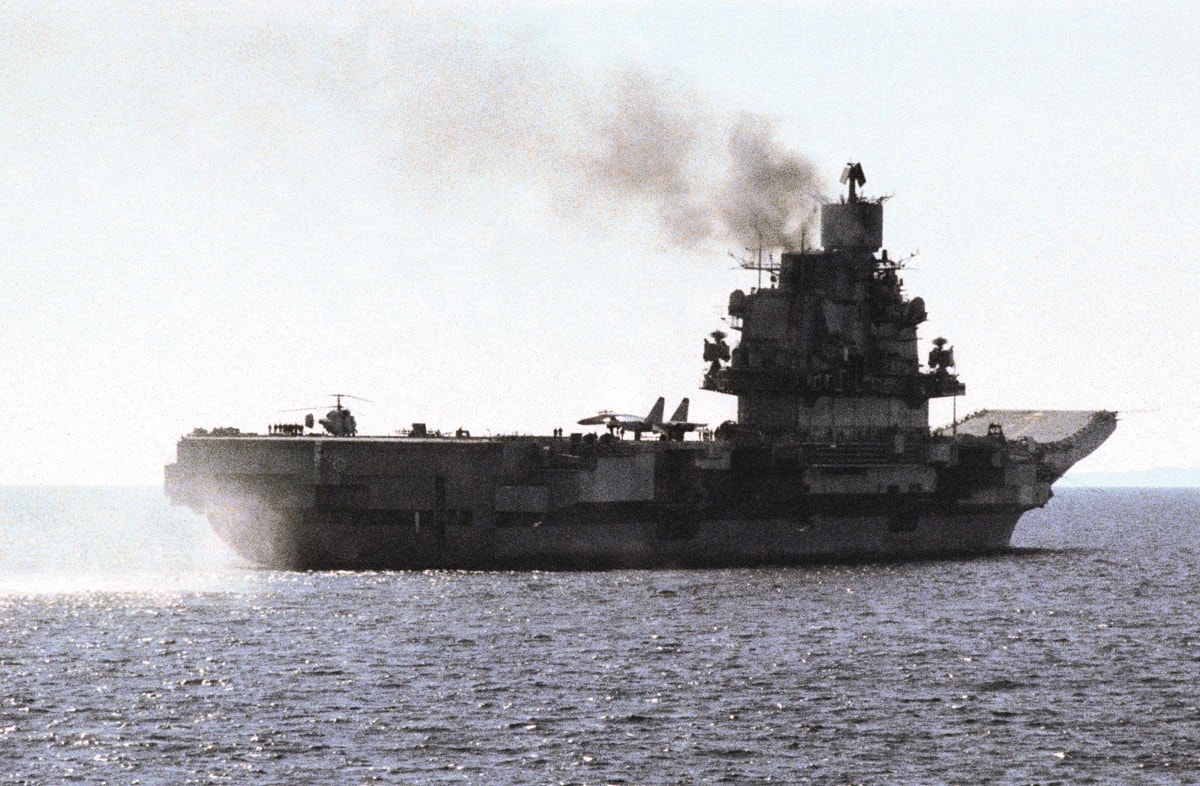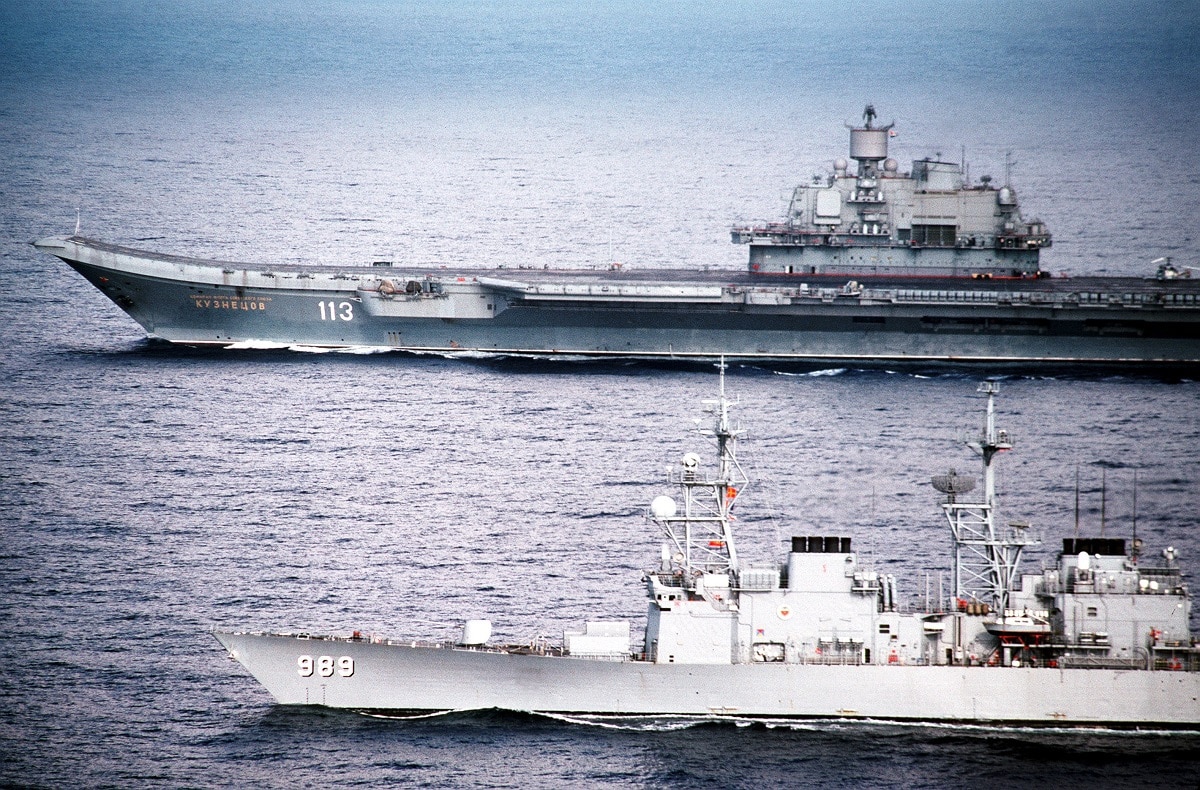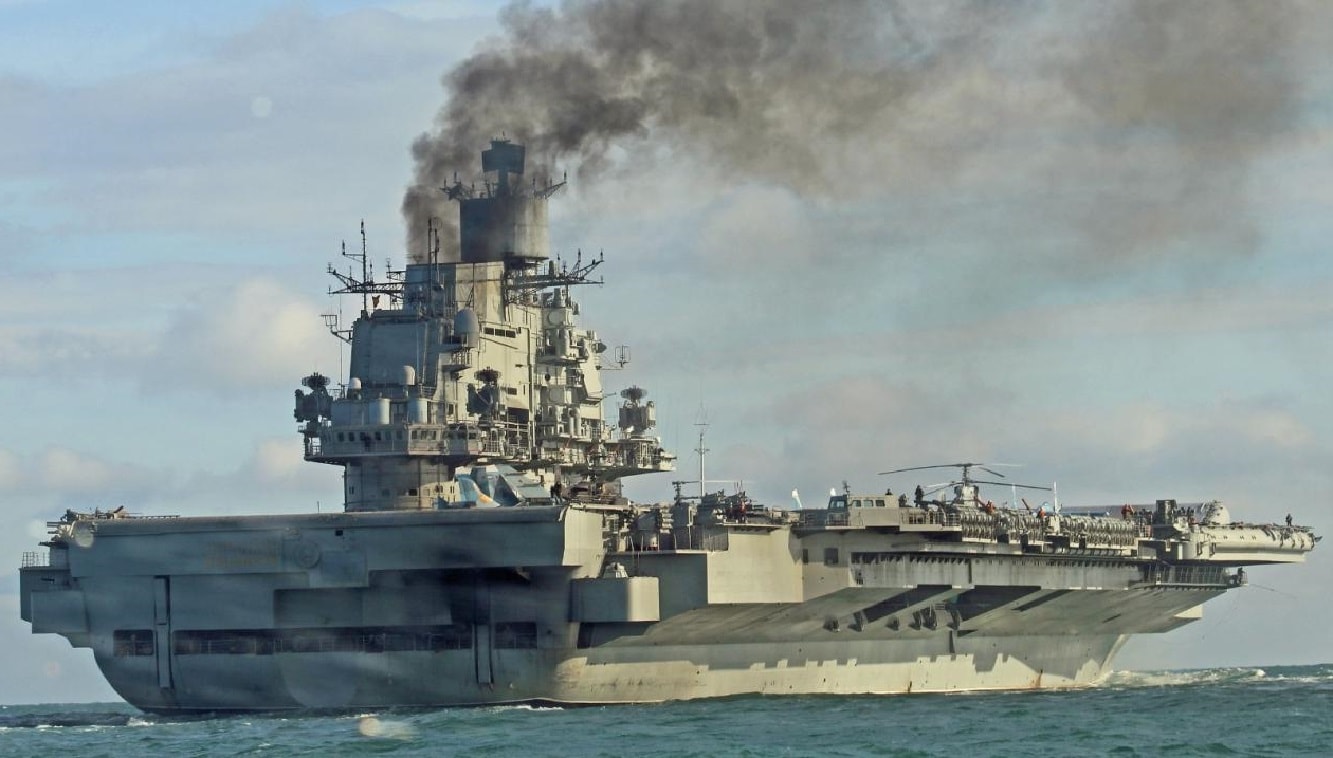Explained: Why Does Putin’s Only Aircraft Carrier Pump Out Black Smoke? – Russia’s only aircraft carrier, the Admiral Kuznetsov, is a floating disaster waiting to happen.
It has been afflicted by so many mishaps over the years that it is difficult to recount all the problems. From deadly fires to oil leaks to breakdowns, Admiral Kuznetsov has seen it all. One thing has been a constant during its lifespan – it produces a lot of stinky, black smoke.
So now the Russians are finally trying to fix it, well, maybe.
Heavy, Sour Fuel Is the Root of the Problem
For propulsion, the Russian carrier burns a heavy, black tar-like substance called Mazut.
Mazut is a thick and sour heavy petrochemical fuel.
This fuel is behind the times. It was used by navies and commercial vessels up until the 1960s and 70s when many military ships converted to nuclear or gas turbine propulsion.
Gas turbines burn natural gas and distillate fuels. Mazut, alternatively, has high levels of sulfur, and these are partially burned in the Admiral Kuznetsov’s combustion chamber.
This partial combustion is what is causing all the black smoke.
Mazut also requires a complex system of pipes and boilers. The pipes on the Admiral Kuznetsov were not constructed with quality and the boilers often fell into disrepair.
The engines also need engine lubricant. Partial burn-off of this product caused some of the black smoke as well.
This Carrier Is So Bad That It Needs a Tugboat for an Escort
The boiler system got so bad on the Admiral Kuznetsov that it was forced to sometimes run on just one boiler – this made the ship move at a paltry four knots. That’s why the carrier was often trailed by seafaring tugboats to make sure it did not completely die on the water.
A breakdown requiring a tug happened off the coast of France in 2012.
A Fix in the Works?
In 2020, the Russians announced they were going to replace the main boilers and diesel generators at the naval yard in Murmansk. There will also be better adjustments to the preheating or injection processes. This is supposed to fix the combustion chamber problems and allow the carrier to burn Mazut without all the black smoke. The Russians say these and other improvements will allow the carrier to be tested at sea in 2022.
Excuses, Excuses
The Russians should have given Admiral Kuznetsov a nuclear power plant in the first place or at least have equipped it with gas turbines.
Moreover, inadequate construction standards have been a problem from the beginning.
The carrier is believed to have suffered from bad workmanship during the 1990s at the Nikolayev Black Sea Shipyard in Mykolaiv.
Whatever the problem, this ship has been an embarrassment and the Russians are likely to come up with more excuses for its poor performance.

A starboard quarter view of the Russian Navy Northern Fleet aircraft carrier ADMIRAL FLOTA SOVETSKOGO SOYUZA KUSNETSOV exercising at sea.

Admiral Kuznetsov in the waters south of Italy with USS Deyo, foreground, steaming off her port side.
1945’s new Defense and National Security Editor, Brent M. Eastwood, PhD, is the author of Humans, Machines, and Data: Future Trends in Warfare. He is an Emerging Threats expert and former U.S. Army Infantry officer.

